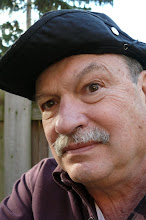








CONSTRUCTION PHOTOGRAPHY - In Appreciation for the Hand of Man.
There isn't much color on a construction site and may the good Lord have mercy on any misplaced sprig of columbine, trillium or showy ladies slipper. But what is lacking in colorful nature aesthetics is more than compensated by the texture, contrast, pattern and line qualities that exist on many sites. These qualities were probably more apparent in an earlier time when there was just black and white. I was first inspired by B&W architectural photography after studing the works of David Plowden, a local professor and Edward Steichen.
Clear sunny days with strong oblique lighting along with a red or orange camera filter seem to produce the best results. Observing and studying the lighting on a particular site during different times of the day and maybe taking a note or two is helpful. Early in the morning or late in the afternoon is best. Winter's oblique lighting with the sun in the south also produces the desired results. Cross lighting enhances texture that is often appealing, great for fluted block (not so hot for woman's portraiture).
The structural steel components (beams, column rows, joists, trusses etc) often provide nice leading lines that bring the eye comfortably into the picture. Open web joists along baluster type railings often have built in pattern qualities and repetition that appeal to the eye as well. This type of photography is a lot like hunting to me, always looking for shapes, expressions, geometric shapes, the unusual.
People! The Portrait Genre, the Jane or Joe involved in their job. Shooting up or shooting down generally makes for a more interesting photo. The more the individual is involved in what they are doing, the stronger the shot. I use a 28mm to 210mm zoom lens. ESP or "Expressions Sell Portraits" or at least they make for more interesting, flattering photos. Quitting time is generally the best time for capturing happy faces.
In the darkroom, using a #3 or #4 enlarging paper or filter is essential to bring out the snap that makes for a strong architectural shot. Black and white infrared film can work nicely but unpredictable. Berg blue or sepia toners used after fixing can add variety to the final product.
There isn't much color on a construction site and may the good Lord have mercy on any misplaced sprig of columbine, trillium or showy ladies slipper. But what is lacking in colorful nature aesthetics is more than compensated by the texture, contrast, pattern and line qualities that exist on many sites. These qualities were probably more apparent in an earlier time when there was just black and white. I was first inspired by B&W architectural photography after studing the works of David Plowden, a local professor and Edward Steichen.
Clear sunny days with strong oblique lighting along with a red or orange camera filter seem to produce the best results. Observing and studying the lighting on a particular site during different times of the day and maybe taking a note or two is helpful. Early in the morning or late in the afternoon is best. Winter's oblique lighting with the sun in the south also produces the desired results. Cross lighting enhances texture that is often appealing, great for fluted block (not so hot for woman's portraiture).
The structural steel components (beams, column rows, joists, trusses etc) often provide nice leading lines that bring the eye comfortably into the picture. Open web joists along baluster type railings often have built in pattern qualities and repetition that appeal to the eye as well. This type of photography is a lot like hunting to me, always looking for shapes, expressions, geometric shapes, the unusual.
People! The Portrait Genre, the Jane or Joe involved in their job. Shooting up or shooting down generally makes for a more interesting photo. The more the individual is involved in what they are doing, the stronger the shot. I use a 28mm to 210mm zoom lens. ESP or "Expressions Sell Portraits" or at least they make for more interesting, flattering photos. Quitting time is generally the best time for capturing happy faces.
In the darkroom, using a #3 or #4 enlarging paper or filter is essential to bring out the snap that makes for a strong architectural shot. Black and white infrared film can work nicely but unpredictable. Berg blue or sepia toners used after fixing can add variety to the final product.
(Published by The Photographic Society of America May 2000)

1 comment:
Post a Comment